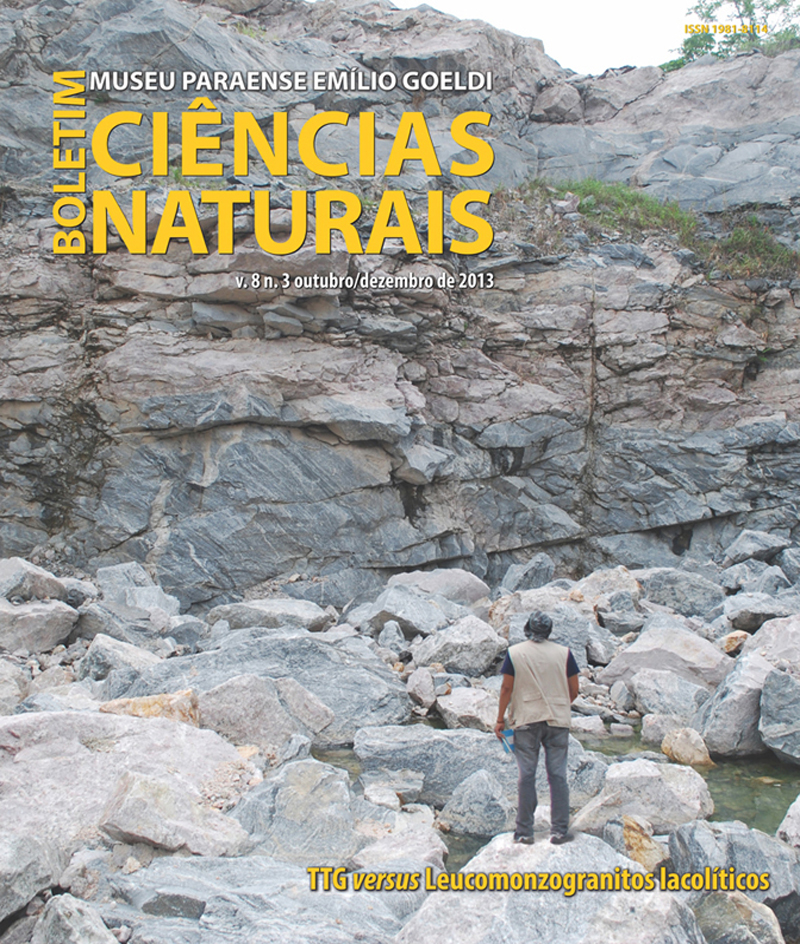Geology, petrography and geochemistry of the TTG associations and leucogranodiorites of the extreme north of Rio Maria Domain, Carajás Province
DOI:
https://doi.org/10.46357/bcnaturais.v8i3.555Keywords:
Rio Maria Domain, TTG, Granodiorites, Carajás, ArcheanAbstract
The geological mapping of the extreme north of Rio Maria domain allowed the individualization of TTG associations and granodiorites. The TTG were distinguished into two main units, a dominant tonalitic-trondhjemitic which retained the designation of Tonalite Caracol, and another, trondhjemitic, related to the Trondhjemite Mogno. The geochemical data indicates that these rocks are part of the high Al2O3 group, with high Na2O, low K2O, and variables light rare earth elements (LREE/HREE) ratios. They are distinguished by higher content of Al2O3, Sr, and La/Yb and Sr/Y ratios of the biotite trondhjemite when compared with epidote-biotite tonalite. The leucogranodiorites were divided as biotite granodiorite and leucogranodiorite. Both are intrusive in the TTG units and distinguished by the degree of saussuritization of plagioclase, which is more intense in leucogranodiorite varieties, and by the degree of deformation that is more intense in the biotite granodiorite. The latter exhibits a relative enrichment in Al2O3, CaO and Na2O, a marked positive Eu anomaly and highly fractionated heavy rare earth elements (HREE) as well as a slight depletion in K2O compared to the leucogranodiorite. Field relationships and geochemical data show that the granodioritic rocks can not be product of differentiation of TTG, considered in this work as independent units.
Downloads
Published
Issue
Section
License
Publication means fully assigning and transferring all copyrights of the manuscript to the journal. The Liability Statement and
Assignment of Copyrights will be enclosed with the notice of acceptance. All the authors must sign the document and return it to the journal.






